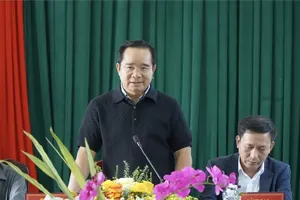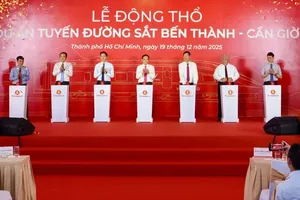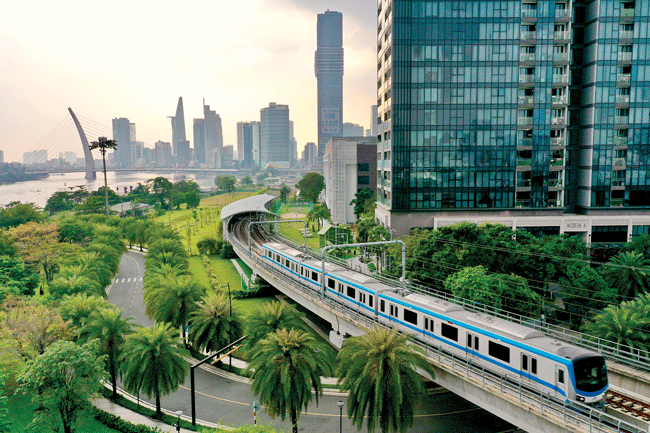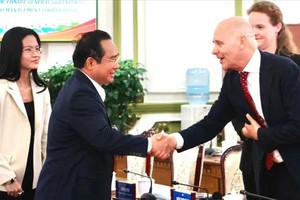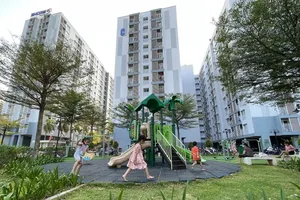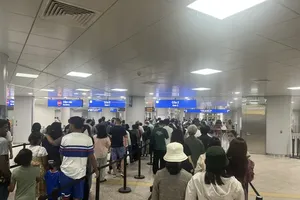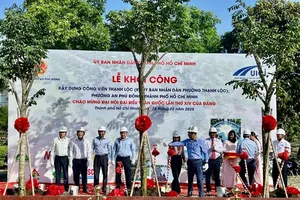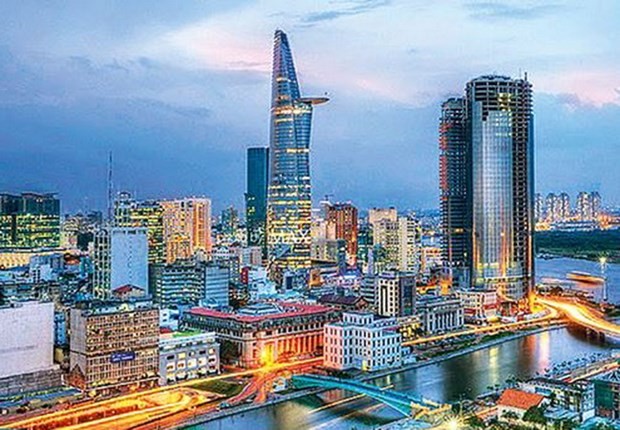
This rate surpasses the national average growth rate of 6.42 percent and represents the highest increase in recent years.
The trade, services and industrial-construction sectors continue to play a significant role, with services accounting for 65.6 percent of the structure and experiencing the highest growth rate at 7.26 percent. These positive results demonstrate the effectiveness of stimulating consumer demand through a series of activities and programs aligned with the city’s orientation toward ‘An eventful city and festival’.
During the first half of 2024, the southern largest city received upgrades in various reform and competitiveness rankings. Notably, the Provincial Governance and Public Administration Efficiency Index (PAPI) improved by 7 positions, and the Administrative Reform Index (Par Index) climbed 3 spots.
Moreover, the Local Innovation and Creativity Index (PII) ranked second nationwide (after Hanoi).
The 2023 Sipas Index (Citizen Satisfaction) and the components within PAPI indicated that citizens have selected HCMC as the most preferred destination for living.
Most recently, the Economist Intelligence Unit (EIU) placed HCMC among the top four cities with the strongest upward trajectory in the past 12 months in their list of ‘The World’s Most Livable Cities in 2024’.
The southern metropolis ranked 133 globally, rising 7 places from the previous year.
Additionally, the city’s notable improvements in healthcare and education indices contributed to this recognition according to EIU. Alongside education, healthcare, and employment, the component index reflecting residents’ preference for moving to the city serves as a dynamic labor market indicator and measures the effectiveness of governance.
However, some notable problems are still seen in the city as Chairman of the Ho Chi Minh City People's Committee Phan Van Mai pointed out at a meeting on the socio-economic situation in the first 6 months of the year, the tasks and key solutions for the last 6 months of 2024. According to Chairman Mai, the city’s capital absorption capacity is still not high, and the effectiveness of administrative reform has not been significantly improved
At the same time, he required responsible agencies to focus on all solutions to address these problems, especially the disbursement of public investment capital. He stressed that the city ought to achieve a growth rate of 7 percent or higher in the third quarter and strive for 8 percent growth in the fourth quarter. The 8-percent goal is related to the resolution of three problems such as public investment disbursement - administrative reform - capital absorption capacity, said Mr. Mai.
Looking at the past 6 months, the trend of foreign direct investment (FDI) capital in Ho Chi Minh City has increased but no specific projects and works has not been able to absorb this capital. A source of capital that is expected and promoted by many measures to unblock the construction, materials, and labor markets is still slow and stalled, namely public investment capital.
As of the end of June, the city's disbursement only reached 13.8 percent of the plan, greatly affecting growth and attracting foreign investment, in which the construction sector alone increased sharply in the first quarter by 7.92 percent but only 4.1 percent in the second quarter.
Therefore, Chairman Mai emphasized that the city must focus on achieving a growth rate of 7 percent-8 percent or higher in both the third and fourth quarters with the 6 key tasks that have been identified by the city leaders in the remaining half of the year. After having identified the problem and having the solutions are also clear, city administrators and related agencies must implement them early and effectively so that the city can continue to recover and accelerate.

